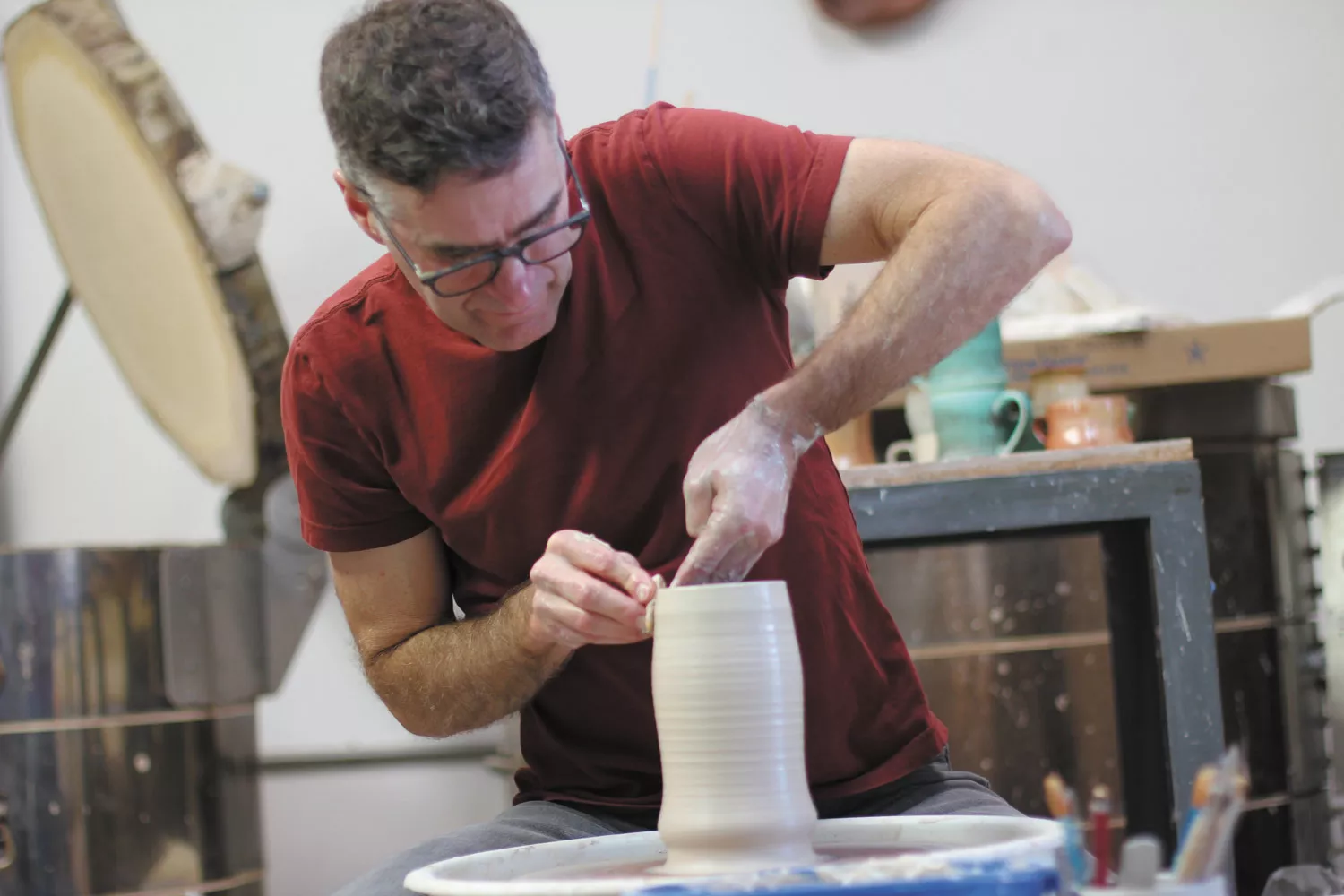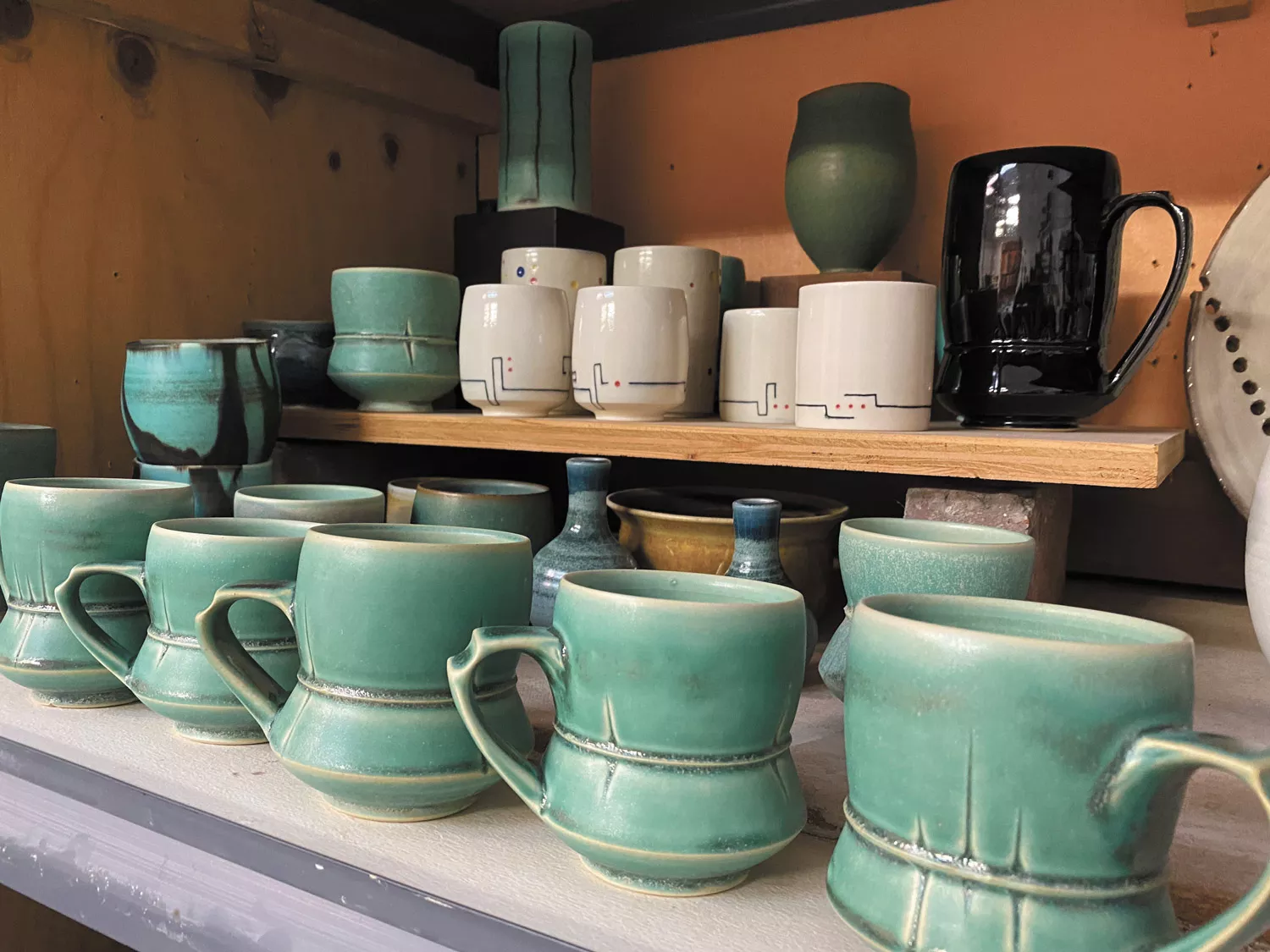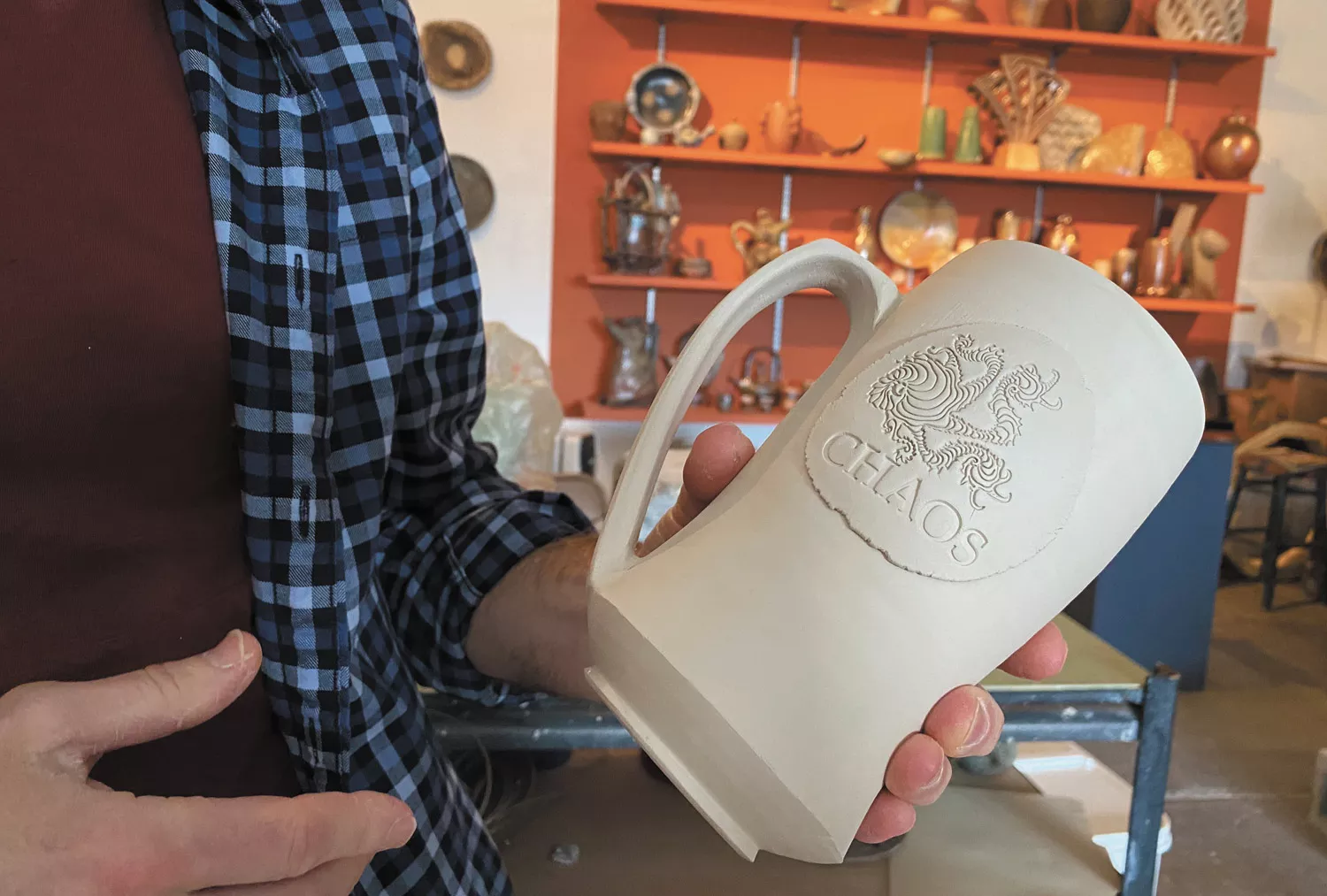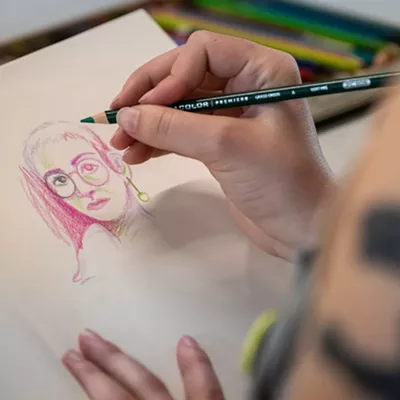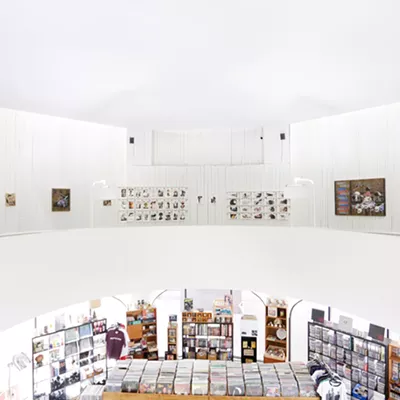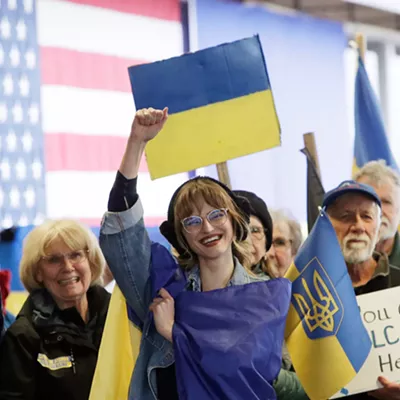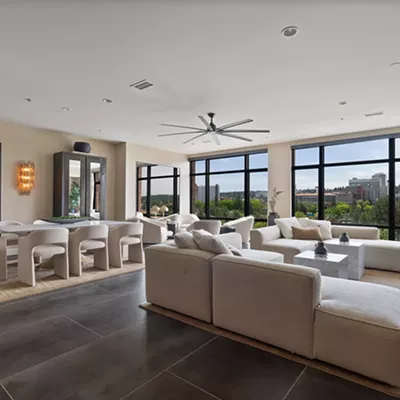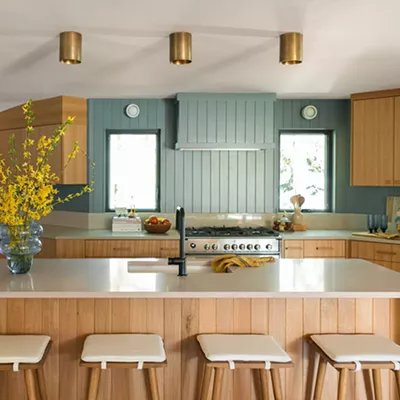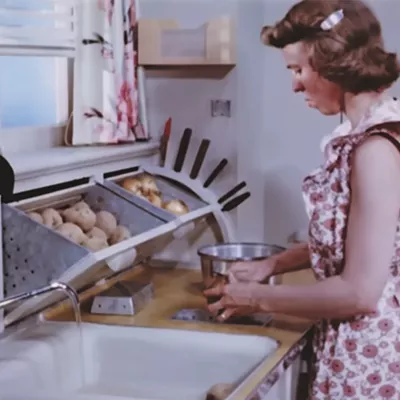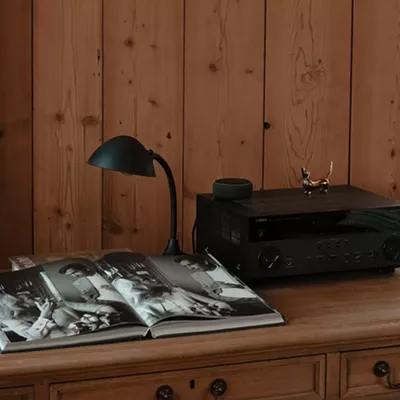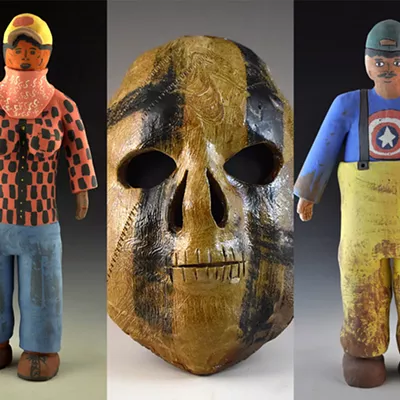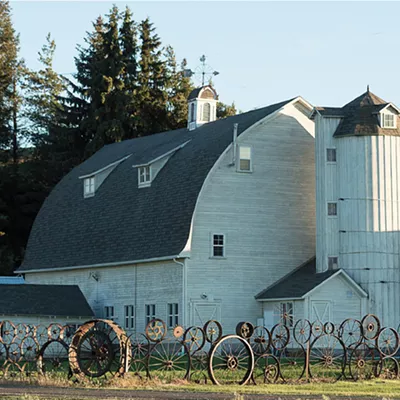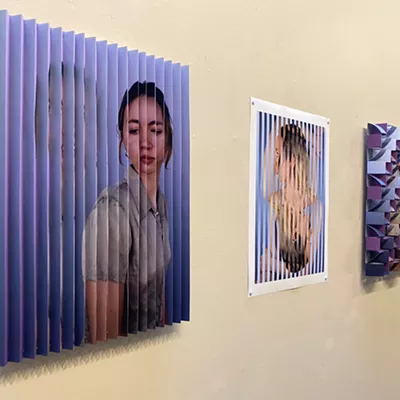Music was Spokane artist Chris Kelsey's first love and still informs his ceramic art.
"I drum, I pot, and I ride bikes," says Kelsey, who spent his young adulthood drumming in a Billings, Montana-area cover band before earning a bachelor's in art from Montana State University. He laughs, adding "that explains why I have back and shoulder issues."
Kelsey is seated at his electric-powered pottery wheel inside Trackside Studio and Ceramic Art Gallery. He's hunched over, arms braced, resting wet fingers and hands on the clay. As the wheel spins, Kelsey presses into and shapes the lump of wet clay, gently lifting the clay upwards to form a tall, hollow cylinder.
This is "potting." With slight variations, the cylinder might become a mug, like those he's making for Hop Chaos Brewing Company's mug club, or a vase Kelsey will let dry, fire in the kiln, then dip into a liquid concoction called a glaze and fire again.
It's also possible the cylinder will get recycled.
"If I don't have an idea of what I'm making, it's not going to be good," says Kelsey, who typically begins with a sketch of the functional pottery — mugs, vases, bowls, dishes — and sculptural works he has been creating for the past 15 years or so.
Kelsey moved to Spokane with wife Julie in 2001, settling on the north side. Building a ceramic studio in his home would require specialized space and equipment, including ventilation and a kiln, so Kelsey rented space at Clay Connection (formerly North Star Ceramics) downtown.
There he met Mark Moore, who joined Kelsey in taking over Trackside (formerly Red Sky Gallery) in 2008. Around that same time, Kelsey had an opportunity to develop the ceramics program at Spokane's St. George's School. He also taught one year at Eastern Washington University.
In 2014, Gina Freuen joined Trackside's gallery as an exhibiting partner, where she, Moore and Kelsey share an interest in atmospheric firings.
"Different kinds of firings are called atmospheric because we we put stuff in [the kiln] and do not really know what's going to happen," Kelsey explains, adding that chemicals — sodium carbonate and calcium bicarbonate — introduced during firing react with the atmosphere inside the kiln to create unique surface effects on the glazed pieces.
Kelsey tends to work in series, alternating between functional pottery and sculptural work, which can be divided into geometric constructions — spheres, cubes, rectangular forms — and flatter, hollow forms that are freestanding or wall-mounted.
With names like "Groove Chart" and "Rhythmic Flow," Kelsey's hollow forms are inspired, in part, by music, including his jazz-oriented drum teacher's percussion charts, showing "one measure of the beat and then the rest was just slashes, like, continue doing that same thing for 16 measures."
That got Kelsey paying attention to music notes and spaces in between notes, the form and absence of it being equally important.
Rhythm, repetition, balance and creating visual tension are also important themes in his work, says Kelsey, who continues to experiment with clay, including just making things.
"I try to give myself permission that every piece doesn't have to be this 'save the world, all the answers'" artwork, he says, adding "but I hope to get a meaningful thing every now and then, or meaningful to somebody."
Visit chriskelseyceramics.com or tracksidestudio.net.

